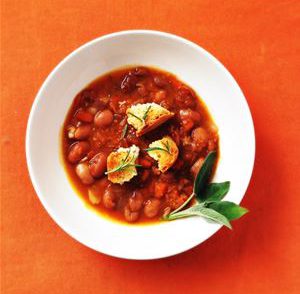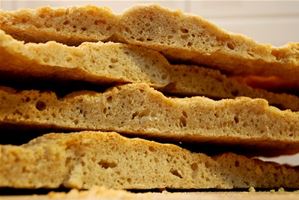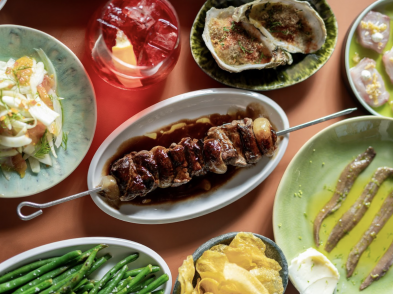I went downstairs to eat at Fuori Porta the other day and was lucky enough to find my friend Donald walking in the door with some free time for an aperitivo. We enjoy chatting about politics, the weather (and how Italians always talk about politics and the weather), but our favourite aperitivo topic is living in Italy.
We nearly always talk about our love/hate relationship with Italy: the impossible hurdles this country puts up for expats and the bureaucracy that, as stranieri, we find ourselves having to complain about (both of us are here as much because of, rather than in spite of, the differences between Italy and our countries of origin). I had known that Donald had been planing to close his studio and work from home, but I didn’t know when. I happened to catch him on a momentous day: his last after 40 years of painting, drawing and making prints in the same studio.
Like me, Donald is a bit of a hoarder: we both find it hard to throw out things that could still be useful. Gracing my garden are five demijohns from his former studio garden. They look happy there, and as my life revolves around wine and food, it is appropriate that these old mammoth-size wine containers sit next to the plants I will soon eat.
That day we talked about how he had spent months cleaning out 40 years of collected ‘stuff’ from his studio. Then he opened his bag and pulled out a small metal case, missing its original leather handle but otherwise in perfect condition. ‘This was my lunchbox,’ he said, ‘from when I was at preschool. I have had it since I was five years old. The handle broke some years ago, but it is still useful for putting all sorts of things in.’ Donald, by the way, is 84 years old, and the lunchbox is in as fine a form as he: both are still in good working order.
Now I had to wonder what might have gone into that lunchbox 79 years ago? And what does he eat now? Oddly enough, we have never talked about food. Now I wanted to know what was in his lunchbox.
In 1931 Donald, sporting long knee socks, a grey school blazer and his splendid new tin lunchbox, walked through Boston, Massachusetts to his first day of preschool. The lunchbox held a peanut butter and jelly sandwich, an apple and a small thermos filled with chocolate milk.
Since moving to Florence in 1955, Donald has had ample time to develop his palate. Now his favourite foods are pasta in any of its various forms and bistecca alla fiorentina. His favourite pasta? Spaghetti aglio, olio e peperoncino.
Spaghetti aglio olio e peperoncino
Serves 4
300 g spaghetti di grano duro
3 spicchi di aglio in camicia
3 cloves of garlic in their skins)
2 peperoncini (chilli peppers)
1 small bunch of prezzemolo (flat-leaf parsley)
Water to boil in a big pot
Sale grosso (large grain sea salt)
Extra virgin olive oil
This is one of Italy’s most simple dishes, yet to do it well you need to concentrate. You need to remember these three things:
Use twice as much water to boil the pasta as you think you need.
Salt the water to taste before throwing the pasta in, and taste the water: if the water isn’t tasty the dish will be insipid.
Cook the pasta for three minutes less than you think it needs.
Method
Bring a huge pot of water to boil, salt to taste, around 20g of salt for 4 litres of water (yes, it’s true!). Taste with a soup spoon before throwing the spaghetti in. Cook for around eight minutes, depending on the size and type of spaghetti, but only until (a couple of minutes before being al dente) the pasta is still a bit crunchy and will snap when bent. Drain the pasta and set aside a cup of the salted cooking water.
Meanwhile, place a pan over a flame and add some extra virgin olive oil. Heat until the oil ripples, add the aglio in camicia, the garlic cloves still clothed in their skins, and let cook a couple of minutes. Throw in the peperoncino and cook for another half minute.
Remove from heat, throw in the crunchy spaghetti, adding half a cup of the cooking water, and toss in the pan to coat with the oil. Continue to cook for a further two or three minutes, adding more of the cooking water to finish cooking the pasta.
Remove from the flame, discard the aglio in camicia and the peperoncino, add the freshly chopped prezzemolo and finish with a few generous lashings of raw olio extra-vergine di oliva.
Buon appetito!







